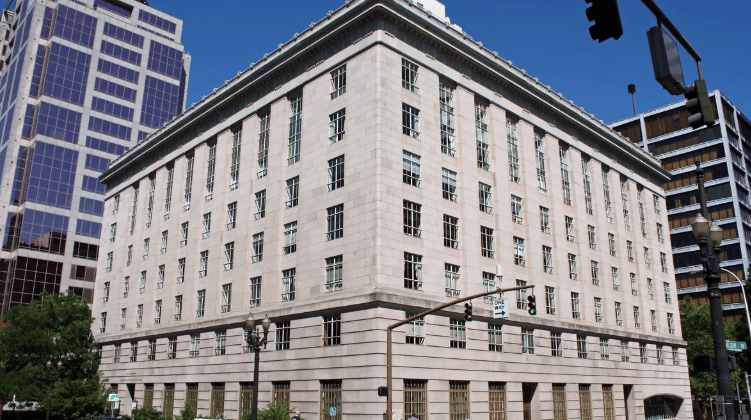- Property Management Brief
- Posts
- BPR (Business Process Reengineering)
BPR (Business Process Reengineering)

Good morning!
This week has been all about progress—interviewing prospective employees to build a stronger team and starting our 2025 planning process. Reflecting on how far we’ve come in 2024, I’m energized by the opportunities and challenges that lie ahead. I’m excited to lead us into another year of growth and excellence.
— Lucas Robinson, Founder & CEO at BudgetMailboxes.com
🎯 This Week’s Strategy:
BPR (Business Process Reengineering)
🤝 Boardroom Brief:
SA Plans to Shed Underused Properties, Saving Taxpayers Millions
Strategy
🎯 BPR (Business Process Reengineering)
Business Process Reengineering (BPR) is a powerful strategy that helps property managers optimize their operations by fundamentally rethinking and redesigning key processes. The goal of BPR is to improve efficiency, reduce costs, and enhance tenant satisfaction by breaking free from outdated methods and embracing innovative approaches.
Instead of making incremental improvements, BPR challenges property managers to ask, “If we were starting from scratch, how would we do this process?” By focusing on what truly adds value, BPR can revolutionize the way you manage properties and deliver services.
How BPR Works
BPR involves analyzing existing processes, identifying inefficiencies, and creating entirely new workflows that align with your business objectives. This might mean automating manual tasks, reassigning responsibilities, or adopting new technologies to better serve clients and tenants.
Implementing BPR in Property Management
1. Identify Core Processes to Reengineer
Start by pinpointing the processes that are critical to your operations yet prone to inefficiencies. These might include:
Tenant onboarding and lease signing.
Maintenance request handling.
Rent collection and financial reporting.
Ask yourself: Are these processes as streamlined as they could be?
2. Map the Current Process
Document the current steps involved in your chosen process. For example, in maintenance request handling, map out every step from tenant reporting an issue to resolving it. Highlight bottlenecks, redundancies, or areas causing delays.
3. Define Goals and Desired Outcomes
Decide what you want to achieve by reengineering the process. Goals might include:
Reducing the time it takes to respond to tenant requests.
Cutting costs associated with manual data entry.
Improving tenant satisfaction scores.
4. Rethink and Redesign
Challenge old assumptions and brainstorm how the process could look in an ideal world. This might involve:
Implementing property management software to automate rent collection and late payment reminders.
Outsourcing certain tasks, like accounting or routine maintenance, to specialists.
Creating self-service tenant portals for faster communication.
5. Pilot and Refine
Test your new process on a small scale to gather feedback and identify any unforeseen issues. Refine the process as needed before rolling it out across your organization.
6. Train Your Team and Monitor Progress
Ensure your team is fully trained on the new process and understands its benefits. Use metrics like response time, tenant satisfaction, or cost savings to monitor the impact of your reengineered process.
Why It Matters
In the competitive world of property management, sticking to outdated processes can hold you back. BPR allows you to:
Improve operational efficiency and reduce costs.
Enhance tenant and client satisfaction with faster, more reliable service.
Adapt quickly to market changes and emerging technologies.
By embracing BPR, property managers can position their businesses for long-term success while delivering exceptional value to their clients and tenants.
Billionaires wanted it, but 66,930 everyday investors got it first.
When incredibly valuable assets come up for sale, it's typically the wealthiest people that end up taking home an amazing investment. But not always…
One platform is taking on the billionaires at their own game, buying up and securitizing some of the most prized blue-chip artworks for its investors.
It's called Masterworks. Their nearly $1 billion collection includes works by greats like Banksy, Picasso, and Basquiat. When Masterworks sells a painting – like the 23 it's already sold – investors reap their portion of the net proceeds.
In just the last few years, Masterworks investors have realized net annualized returns like +17.6%, +17.8%, and +21.5% (from 3 illustrative sales held longer than one year).
Past performance not indicative of future returns. Investing Involves Risk. See Important Disclosures at masterworks.com/cd.
Boardroom Brief
GSA Plans to Shed Underused Properties, Saving Taxpayers Millions

The U.S. General Services Administration (GSA) is set to divest eight underused federal properties across seven states and Washington, D.C., aiming to reduce 1.5 million square feet of office space and save taxpayers over $475 million in the next decade. This effort addresses inefficiencies exacerbated by increased telework and highlights the government’s push to optimize real estate, cut costs, and reduce environmental impacts. By disposing of these properties through sales, transfers, or exchanges, the GSA reinforces its commitment to fiscal responsibility and effective use of taxpayer dollars.
Game
🎉 Fun Finale: Play & Poll
Which country invented tea?(Tap on your answer) |
Transform Mortgage Calls with AI
Boost your mortgage business with Synthflow AI Phone Calls. Handle inquiries 24/7, qualify leads instantly, schedule appointments, and transfer prospects to loan officers. Fully CRM-integrated and starting at $29/month, it’s the smarter way to close more deals.

